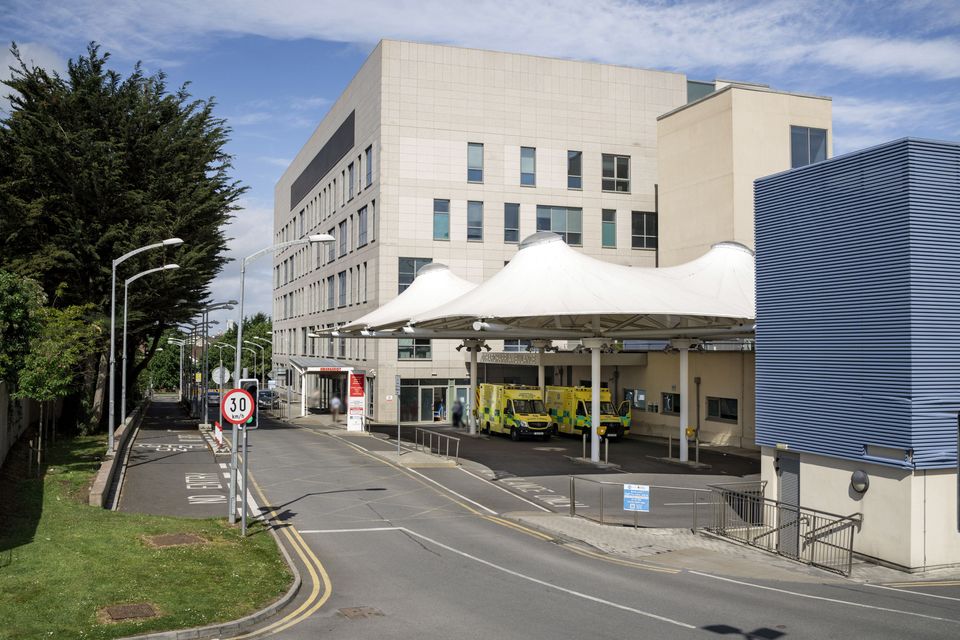More than 230 patients died on trolleys in University Hospital Limerick over five-year period
Screening is one of a number of measures targeting overcrowding at University Hospital Limerick. Photo: Don Moloney
A total of 239 patients died on trolleys in the emergency department at University Hospital Limerick from 2019 to 2023 – the highest number among all major hospitals on the west coast from Limerick to Donegal.
In the same period, 195 people died on ED trolleys in University Hospital Galway, 150 in Sligo University Hospital, 117 in Mayo University Hospital, 108 in Letterkenny and 72 in Portiuncula.
The figures include only patients deemed unwell enough to be admitted and who died on a trolley in the ED while waiting for a bed.
It does not include patients who passed away by the time they arrived in ED or were critically unwell and were brought directly to resuscitation following an accident or sudden illness.
The majority of those patients (90pc) were triaged as the highest category (P1 and P2), indicating a life-threatening illness or patients who are at end-of-life. The figures were presented at the quarterly regional health forum attended by councillors from Donegal down to Limerick. They were revealed in response to a question from Clare councillor Cillian Murphy, who asked for a breakdown of the numbers of deaths of in-patients on trolleys.
In a response submitted by CEO of UL Hospitals Group Colette Cowan, she said that to expedite admission to the main hospital a single-room pathway was in place in the ED for patients who were seriously ill or dying
“We have a strong Patient Advocacy Liaison Service presence for support of patients and families in the ED as well as a bereavement room where families can spend time with their loved one following their death,” she said.
Councillor Murphy said each of these cases across the whole health forum region was a terrible individual traumatic experience for families and friends, and those presenting at ED's needed critical intervention. But he said we needed to see the hard facts about the figures so that changes could be made to reduce them as much as possible.
UHL continues to see high volumes at its emergency department – 80,052 last year. A total of 30,642 people attended the ED up to May 9 this year, a rise of around 12pc on last year – the bulk of them 58pc from Limerick but 7,657 or 25pc were from Clare.
The Friends of Ennis hospital group say this data is concerning and supports its call for an upgrade of Ennis to a Model 3 hospital – conventionally known as a “general hospital” – to support the staff at UHL and the patients presenting there.
UHL hospital group say it continues to take measures to relieve congestion at its ED and provide alternative pathways to care. These include its geriatric emergency care for those aged over-75, which is a 24-hour service on weekdays. It also includes its GP at-the-door service. Meanwhile, medical assessment units at Ennis Nenagh and St John’s are to be opened 24/7 on a phased basis this year.
Councillor Rita McInerney, of Kilrush district, asked how much would it cost to reconfigure UHL to alleviate the current pressures as opposed to the potential cost of reopening the A&E in Ennis General Hospital.
Ms Cowan welcomed recent measures announced for the Mid-West region by Health Minister Stephen Donnelly, including a Hiqa-led review into urgent and emergency-care capacity to determine whether a second ED is needed.
“The additional capital investment recently announced amounts to €156m and will enable us to proceed with the build of a new 96-bed block (delivery circa 2027) and a rapid-build 16-bed ward (to be delivered before winter this year). In addition, the minister announced €79.6m in recurring revenue funding for additional staff across the HSE Mid West Region (717 additional staff),” she said.
“The upgrading of any of our Model 2 Hospitals to a Model 3 is a national policy decision. The review will consider the case for a second emergency department for the region, in light of demographic changes in recent years and ongoing pressures at the emergency department at University Hospital Limerick.
“We look forward to contributing to this review process. We expect that any recommendations arising from same would require all stakeholders to contribute to a cost-benefit analysis of the options.”
Ms Cowan admitted attendances at the ED remain “extremely high” and patients continue to endure “long waits on trolleys”.
“University Hospital Limerick continues to experience extremely high levels of attendances at the emergency department,” she said.
“The latest available data shows that up to the 21st April 2024, presentations to the ED at UHL increased by 12pc on last year and emergency admissions by 10pc. This trend is more pronounced still among the over-75s, with ED presentations having increased by 13pc and emergency admissions by 12pc.
“This sustained and increasing level of demand has meant that many of our admitted patients have long waits on trolleys for inpatient beds.”
She said the number of nurses in the ED had risen from 113.5 whole-time equivalents to just under 150 through the implementation of “safer staffing” and the recruitment of additional nurses to care for admitted patients.
“An additional two consultants in emergency medicine have also been recruited as well as an additional three consultants in paediatric emergency medicine,” she said.
Join the Irish Independent WhatsApp channel
Stay up to date with all the latest news










